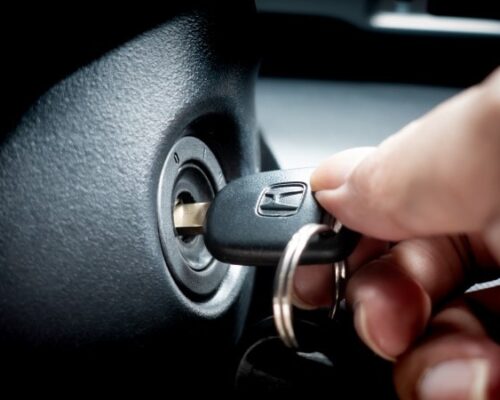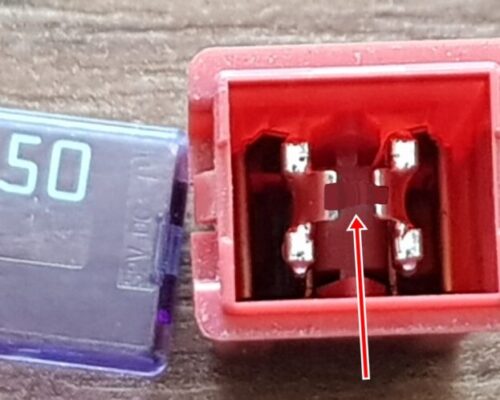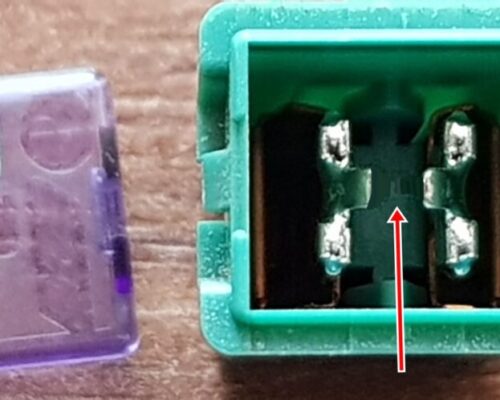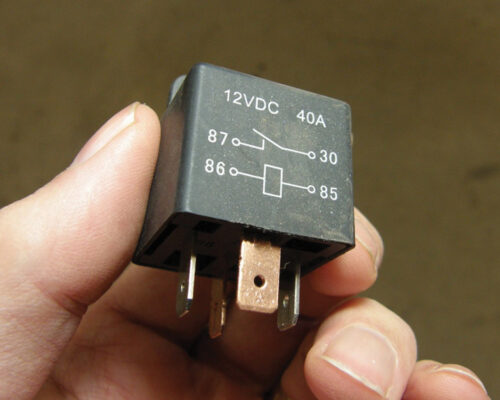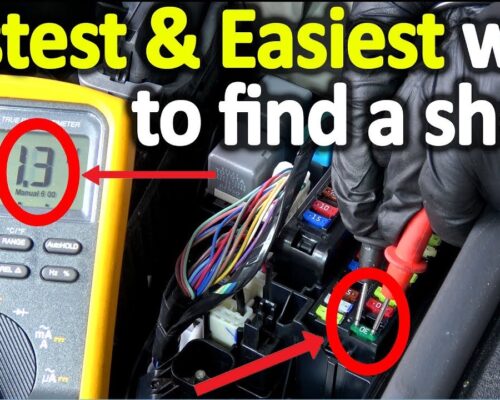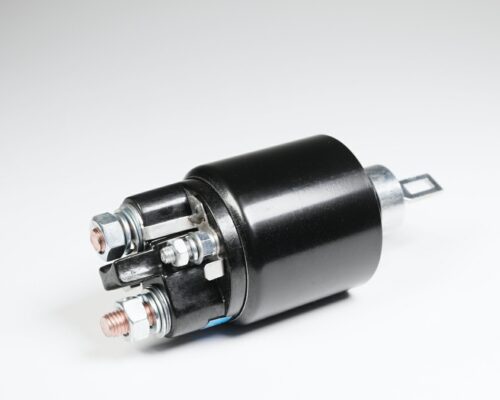
Types of Car Fuses: Everything You Need To Know
Car fuses are an important part of any vehicle. They are responsible for protecting the electrical system from damage. There are many different types of car fuses, each designed for a specific purpose.
The most common type of fuse is the blade fuse. Blade fuses are used in most vehicles and are easy to replace. Another type of fuse is the mini fuse.
Mini fuses are smaller than blade fuses and are used in vehicles that have limited space for electrical components.
Nearly every car on the road has some type of electrical system. In order to keep this system running properly, it is important to have the right fuses in place. Fuses are designed to protect your car’s electrical components by preventing too much current from flowing through them.
If a fuse blows, it means that there is an excessive amount of current flowing through it and this can damage your car’s electrical components.
There are many different types of fuses available on the market, so it is important to know which one is right for your car. The most common type of fuse is the blade fuse.
Blade fuses come in a variety of sizes and amperages, so you will need to select the correct one for your car. Another popular type of fuse is the cartridge fuse. Cartridge fuses are also available in a variety of sizes and amperages, but they are not as commonly used as blade fuses.
When selecting a fuse for your car, it is important to choose one with the correct amperage rating. Choosing a fuse with too high of an amperage rating can cause damage to your car’s electrical components, while choosing one with too low of an amperage rating can result in frequent blowing of the fuse. If you are unsure what size or amperage rating you need, consult your car’s owner’s manual or an auto parts store clerk for assistance.
Your Car's Fuse Box Explained: Everything You Need to Know About The Stuff In Fuse Boxes!
What Type of Fuse Do I Need for My Car?
Most cars on the road today use what are called cartridge fuses. These fuses are made up of a metal strip that is enclosed in a heat-resistant housing. The housing has two terminals that protrude from it, and these terminals are connected to the metal strip.
One end of the metal strip is connected to the battery, while the other end is connected to the electrical system of the car.
When an electrical current flows through the fuse, it heats up the metal strip. This heat causes thestrip to expand, which in turn breaks the circuit and stops the flow of electricity.
The advantage of using a cartridge fuse is that they can be easily replaced if they blow. All you need to do is remove the old fuse and insert a new one into the socket.
What are the 3 Types of Fuses?
The three types of fuses are cartridge, plug, and panel.
Cartridge fuses are the most common type of fuse. They come in a variety of sizes and amperages.
Cartridge fuses consist of a metal strip that is wrapped around a glass or ceramic tube filled with a heat-sensitive substance. When too much current flows through the fuse, the metal strip melts and breaks the circuit, which prevents further flow of current.
Plug fuses also come in a variety of sizes and amperages.
They consist of a screw-in base with two terminals. The fuse element is a thin wire that runs between the two terminals. When too much current flows through the fuse, the wire heats up and melts, breaking the circuit and preventing further flow of current.
Panel fuses are larger than cartridge or plug fuses and are used to protect high-voltage circuits such as those found in homes or businesses. Panel fuses consist of a metal housing that contains one or more panels filled with a heat-sensitive substance.
How Do I Know What Kind of Fuse I Have?
There are a few different ways that you can determine what kind of fuse you have. The first way is to look at the outside of the fuse itself. If there is a label on the fuse, it will usually indicate what kind of fuse it is.
Another way to determine the type of fuse is by looking at the size and shape of the wires inside the fuse. Finally, you can also ask an electrician to help you identify the type of fuse.

Credit: www.youtube.com
Automotive Fuses
An automotive fuse is a device that is used to protect the wiring in your car from overloading. It is usually located in the engine bay, near the battery. If there is an electrical problem in your car, the fuse will “blow” and stop the flow of electricity, preventing damage to your car’s wiring.
There are different types of fuses available for different applications. For example, some fuses are designed to protect only certain circuits, while others can be used for any circuit in your car. Some common types of automotive fuses include:
-Mini Fuses: These fuses are typically used for smaller electronics such as radios and GPS units. They are also often used for circuits that don’t draw a lot of power, such as interior lights.
-Maxi Fuses: These larger fuses are typically used for high-powered electronics such as amplifiers, or for circuits that draw a lot of power, such as the engine’s ignition system.
-Junction Blocks: Junction blocks combine several mini or maxi fuses into one unit, making them ideal for protecting multiple circuits at once.
Installing a new fuse is simple – just remove the old one and insert the new one in its place. Be sure to check the amperage rating on the new fuse before installation; if it’s too high or too low, it could cause problems with your car’s electrical system.
Mini Blade Fuse
A mini blade fuse is a type of electrical fuse that is used in smaller electronic devices. These fuses are often found in cars, trucks, and other vehicles. They are also used in some portable electronic devices.
Mini blade fuses are designed to protect these devices from overloading or short-circuiting.
Mini blade fuses come in a variety of sizes, but they all have the same basic design. The fuse consists of two metal prongs (the blades) that are connected by a thin piece of wire or plastic.
When the device is turned on, electricity flows through the fuse and lights up the device. If there is an overload or short-circuit, the wire or plastic melts and breaks the connection between the two metal blades, stopping the flow of electricity and protecting the device from damage.
Mini blade fuses are available in a variety of amperage ratings to match the needs of different devices.
They can also be bought with different voltage ratings depending on the application. For example, mini blade fuses rated for 24 volts are typically used in automotive applications while those rated for 125 volts are more common in portable electronics like laptops and cell phones.
Are Car Fuses Universal
Most cars nowadays have electrical systems that are 12 volts. So, regardless of the make or model of your vehicle, you can use a 12-volt fuse in it. However, there are a few exceptions.
Some European cars have 24-volt electrical systems and will require 24-volt fuses. And some older vehicles may have 6-volt electrical systems that require special 6-volt fuses.
If you’re not sure which type of fuse to use in your car, consult the owner’s manual or an automotive technician.
But in most cases, a 12-volt fuse will work just fine.
Car Fuse Replacement
When a car’s fuse blows, it can be a frustrating experience. Fuses are designed to protect your car’s electrical system from overloads, and they will eventually burn out if there is too much current running through them. Replacing a blown fuse is usually a quick and easy process, but it’s important to know which fuse goes where in your car.
This guide will show you how to replace a blown fuse in your car.
First, locate the fuse box in your car. It is usually located under the dash or near the hood release.
Once you have found the fuse box, open it up and identify the blown fuse. Remove the old fuse by pulling it out of its socket. Then, insert the new fuse into the socket and close up the fuse box.
Test your electrical system to make sure that everything is working properly before driving away.
Micro Fuse Vs Mini Fuse
There are a few key differences between micro fuses and mini fuses that should be considered when choosing which type of fuse to use for your circuit. Micro fuses are designed to protect smaller electronic devices, while mini fuses are meant for larger electronics.
Micro fuses can handle lower currents than mini fuses, so they’re better suited for protecting delicate circuitry.
They’re also faster-acting than mini fuses, meaning they’ll blow sooner if there’s an overload on the circuit. However, this also means they’re more likely to blow due to momentary surges or spikes in current.
Mini fuses can handle higher currents than micro fuses, making them better suited for protecting larger electronics.
They’re also slower-acting than microfuses, meaning they’ll tolerate brief surges or spikes in current without blowing. However, this also means that it may take longer for them to blow if there’s a sustained overload on the circuit.
So which type of fuse is right for you?
It depends on the size and sensitivity of the electronics you’re trying to protect, as well as the amount of current your system typically sees. If you’re not sure which type of fuse would be best for your application, consult with an expert or ask at your local hardware store.
Conclusion
Car fuses are an important part of your car’s electrical system. They help protect your car’s wiring from overloading and short circuits. There are different types of car fuses, each designed for a specific purpose.
The most common type of fuse is the blade fuse. Blade fuses are used to protect your car’s electrical system against overloads and short circuits. They come in different sizes, depending on the amount of current they can handle.
Another type of fuse is the mini-fuse. Mini-fuses are used to protect smaller electrical components, such as lights and radios. They come in different sizes, depending on the amount of current they can handle.

